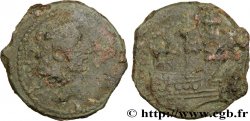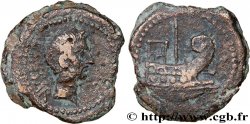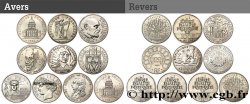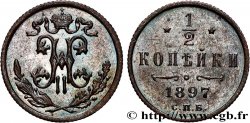v34_1101 - NARBO - NARBONNA - OCTAVIAN Dupondius, (GB, Æ 30)
MONNAIES 34 (2008)
Prezzo di inizio : 450.00 €
Valutazione : 600.00 €
Prezzo realizzato : 450.00 €
Numero di offerte : 1
Offerta maxima : 506.00 €
Prezzo di inizio : 450.00 €
Valutazione : 600.00 €
Prezzo realizzato : 450.00 €
Numero di offerte : 1
Offerta maxima : 506.00 €
Tipo : Dupondius, (GB, Æ 30)
Data: 40 AC.
Nome della officina / città: Gaule, Narbonne
Metallo : rame
Diametro : 29,5 mm
Asse di coniazione : 2 h.
Peso : 16,85 g.
Grado di rarità : R2
Commenti sullo stato di conservazione:
Exemplaire sur un flan relativement large et un peu irrégulier sur la partie supérieure gauche du revers. Types de droit et de revers presque centrés avec les types complets. Patine verte avec de légères zones rougeâtres
N° nelle opere di riferimento :
Diritto
Titolatura diritto : CAESAR.
Descrittivo diritto : Tête nue d’Octave à droite.
Traduzione diritto : “Cæsar”, (César).
Rovescio
Titolatura rovescio : ANÉPIGRAPHE.
Descrittivo rovescio : Proue de navire (rostre) avec le château avant et un mat.
Commento
Au droit, la légende CAESAR est complète, bien qu’en bord de flan. Les dupondius, qu'ils soient de Vienne, d'Orange, de Narbonne, de Lyon ou de Nîmes, sont considérés par certains comme appartenant aux gauloises et par d'autres aux romaines ; il s'agit tout simplement d'un monnayage gallo-romain, émis par les romains sur un territoire conquis mais circulant en même temps avec les monnaies autochtones.
On the obverse, the legend CAESAR is complete, although on the edge of the flan. The dupondius, whether from Vienna, Orange, Narbonne, Lyon or Nîmes, are considered by some to belong to the Gauls and by others to the Romans; it is simply a Gallo-Roman coinage, issued by the Romans on a conquered territory but circulating at the same time with the indigenous coins
On the obverse, the legend CAESAR is complete, although on the edge of the flan. The dupondius, whether from Vienna, Orange, Narbonne, Lyon or Nîmes, are considered by some to belong to the Gauls and by others to the Romans; it is simply a Gallo-Roman coinage, issued by the Romans on a conquered territory but circulating at the same time with the indigenous coins








 Segnalare un errore
Segnalare un errore Stampate la pagina
Stampate la pagina Condividi mia selezione
Condividi mia selezione Fai una domanda
Fai una domanda Consegnare / vendere
Consegnare / vendere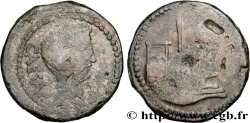
 Descrittivo
Descrittivo